Article Review: PSMA PET CT in biochemical recurrence of prostate cancer with PSA levels 0 2 ng mL a German multicenter analysis of conventional PSMA tracers including 68Ga Ga PSMA 11 68Ga Ga PSMA I amp T and 18F PSMA 1007
 Aldo Yang
Aldo YangObjectives
This multicenter study evaluated the detection rates of three Prostate-Specific Membrane Antigen (PSMA) Positron Emission Tomography/Computed Tomography (PET/CT) tracers ([68Ga]Ga-PSMA-11, [68Ga]Ga-PSMA I&T, [18F]PSMA-1007) in 321 patients with Biochemical Recurrence (BCR) of Prostate Cancer (PC) and very low Prostate-Specific Antigen (PSA) levels (≤0.2 ng/mL).
- The core contribution is establishing the overall pooled detection rate (29.6%) in this specific low-PSA cohort.
- It demonstrates comparable diagnostic performance among the three tracers, finding no statistically significant difference between 68Ga-labeled and 18F-labeled tracers in this setting.
- It identifies PSA level >0.15 ng/mL, initial Gleason score >7, and prior Androgen Deprivation Therapy (ADT) as factors associated with significantly higher detection rates.
Methodology
This study employed a retrospective multicenter analysis design involving five German academic centers. Data from 321 patients with a history of radical prostatectomy and BCR with PSA ≤ 0.2 ng/mL were analyzed. Patients underwent whole-body PET/CT imaging ~60-90 min after injection of one of three tracers: [68Ga]Ga-PSMA-11 (n=170), [68Ga]Ga-PSMA I&T (n=40), or [18F]PSMA-1007 (n=111). All PET/CT scanners were accredited by the European Association of Nuclear Medicine Research GmbH (EARL) initiative.
- The primary endpoint was the overall detection rate of suspicious lesions.
- Secondary endpoints included detection rates stratified by tracer type, PSA level, PSA doubling time (dt), initial Gleason score, and previous therapies (salvage radiation, ADT).
- Statistical analysis used Fisher’s exact test for comparing detection rates among subgroups based on metric scales (PSA, PSA dt) and the Chi-square test for ordinal scales (Gleason score, pretreatment, tracer type).
- The phi coefficient (φ) was used to quantify the strength of association between detection rates and binarized predictor variables.
Results
The study's core contributions are supported by data from 321 patients.
- The overall pooled detection rate for PSMA PET/CT was 29.6% (95/321).
- No significant difference was found between tracers: [68Ga]Ga-PSMA-11 (29.4%, 50/170), [68Ga]Ga-PSMA I&T (22.5%, 9/40), and [18F]PSMA-1007 (32.4%, 36/111) (p ≥ 0.314).
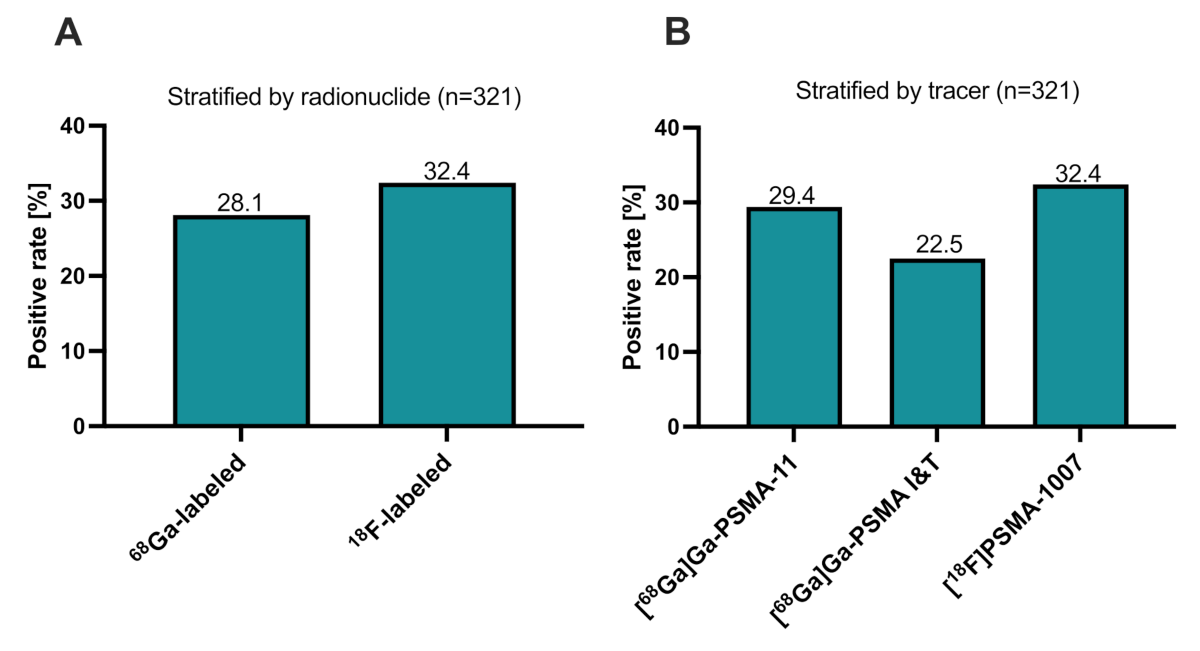
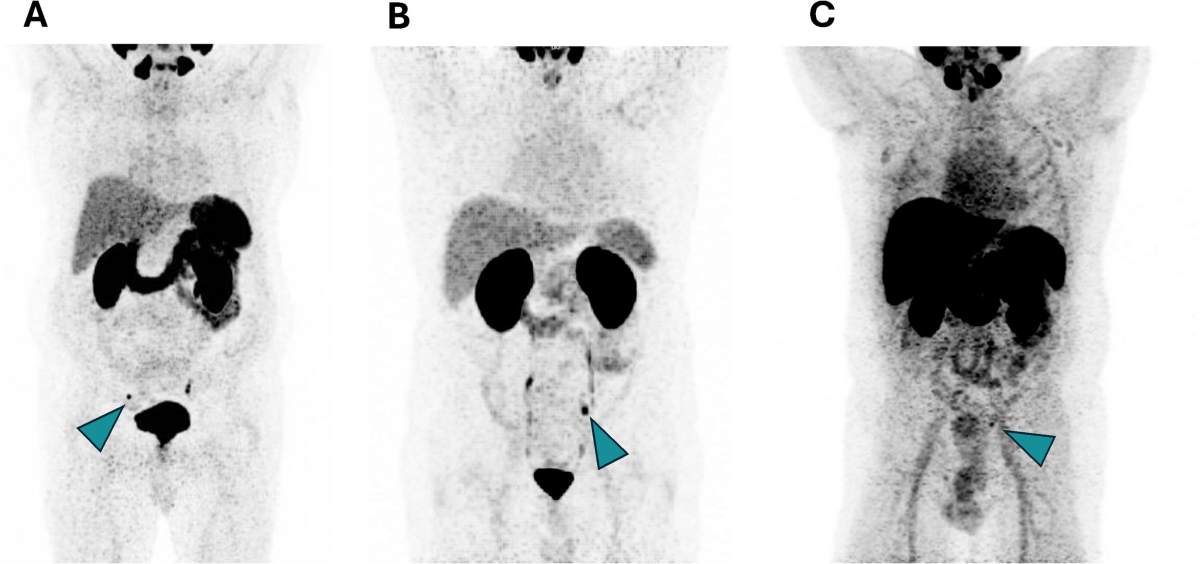
- Detection rates increased significantly with PSA levels: 23.3% for PSA <0.1 ng/mL, 25.6% for PSA 0.1-0.15 ng/mL, and 35.6% for PSA >0.15 ng/mL (p=0.029, φ=0.122).
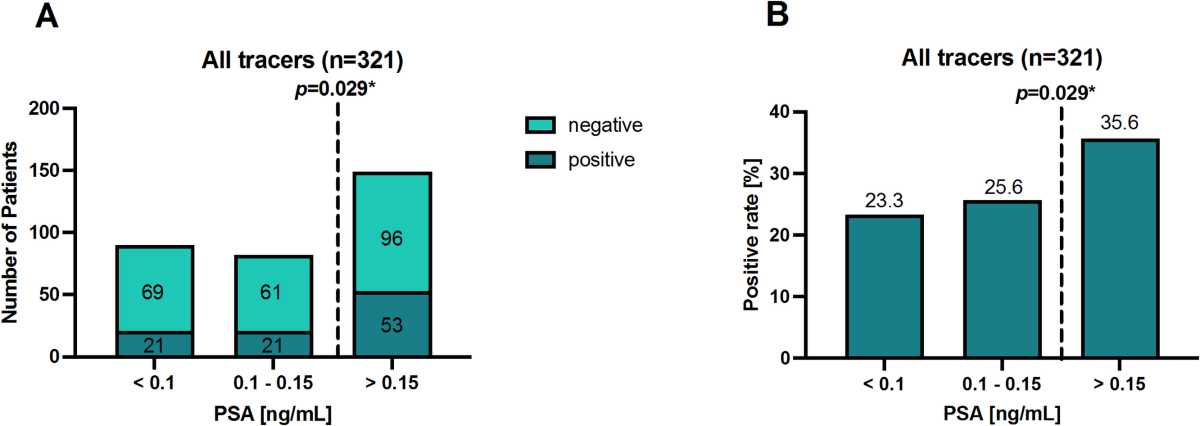
- Detection rates were significantly higher for initial Gleason score >7 (38.3%) compared to ≤7 (25.0%) (p=0.018, φ=0.141).
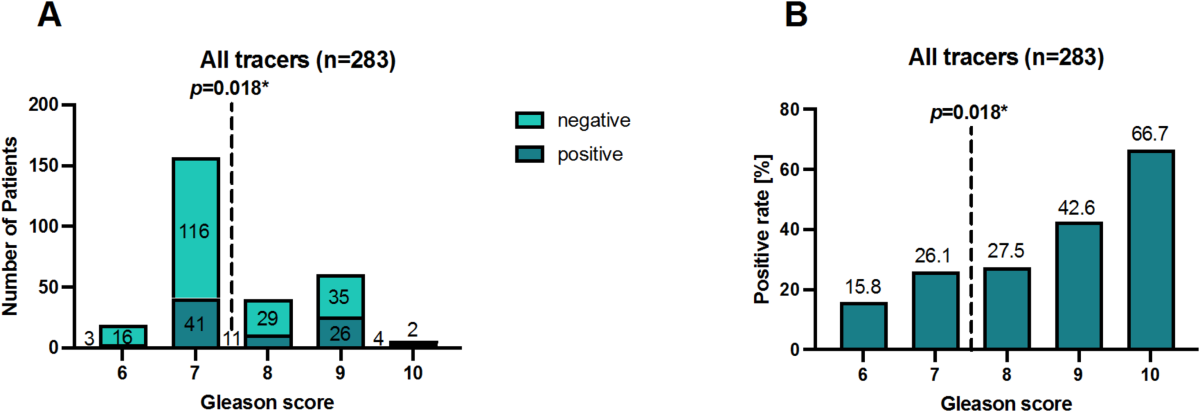
- Prior ADT was associated with a higher detection rate (40.3% vs. 26.8%, p=0.031, φ=0.120).
- PSA dt showed a trend but no significant association with detection rate (p=0.077), though data was only available for 149 patients.
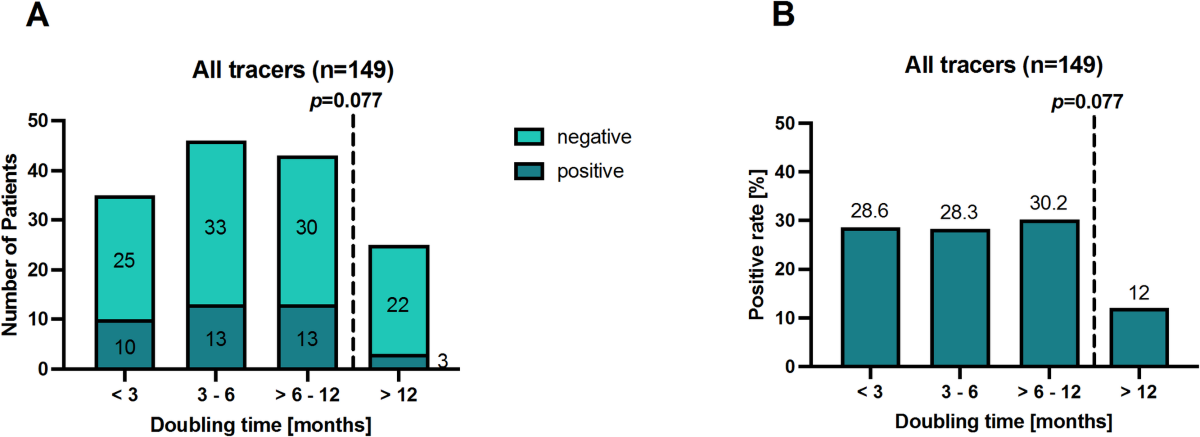
Discussions
This study provides valuable real-world data on PSMA PET/CT performance in a challenging low-PSA BCR setting. Limitations & Suggestions:
- The retrospective design introduces potential selection bias and heterogeneity across centers, although EARL accreditation helps standardize imaging quality.
- Subgroup sizes vary, particularly for [68Ga]Ga-PSMA I&T (n=40) and for analyses requiring complete data (e.g., PSA dt, n=149), which may limit the statistical power for comparisons and subgroup analyses. Missing data were not imputed.
- While no significant difference between tracers was found, the study might be underpowered to detect subtle differences, especially for [68Ga]Ga-PSMA I&T. A prospective, ideally head-to-head comparison within the same patients (if ethically and logistically feasible) or larger matched cohorts, could provide more definitive evidence.
- The analysis focuses on detection rate but lacks multiparametric analysis incorporating other imaging or clinical features, which could potentially improve predictive models for scan positivity.
- Inter-observer variability in image interpretation was not assessed, which is a common limitation in retrospective multicenter studies.
Subscribe to my newsletter
Read articles from Aldo Yang directly inside your inbox. Subscribe to the newsletter, and don't miss out.
Written by
